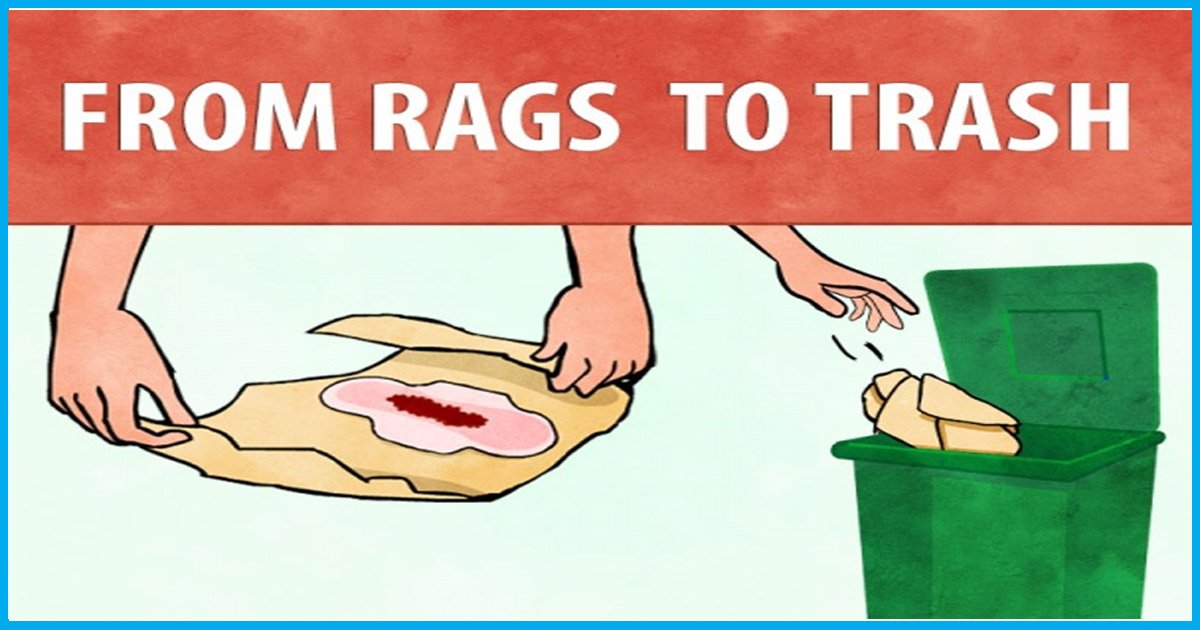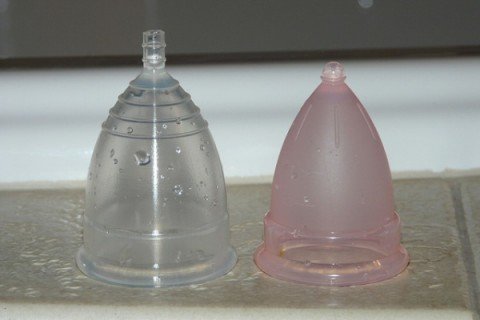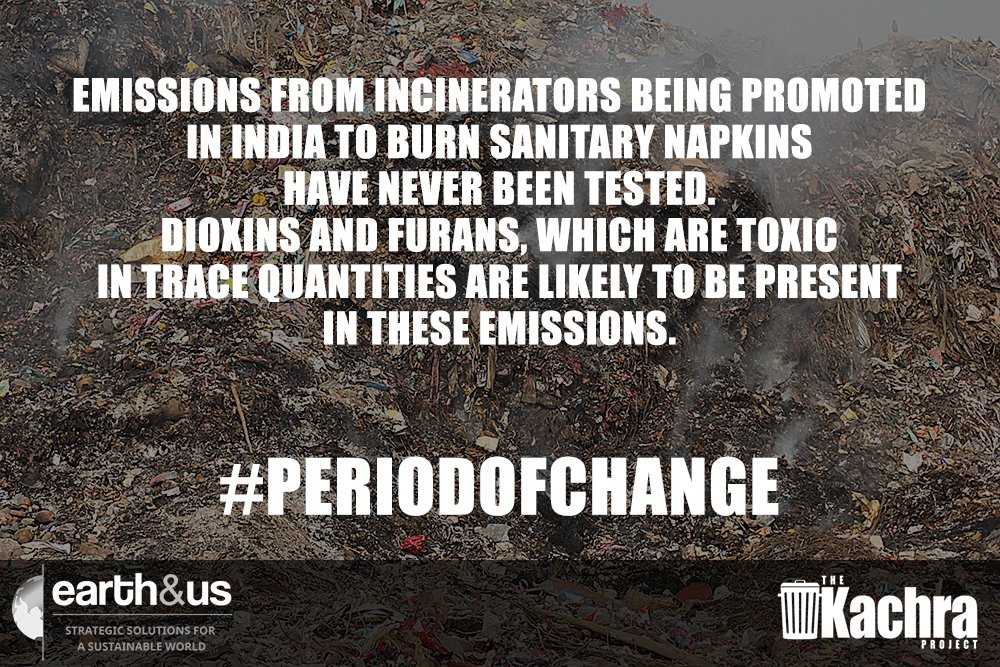
Broken Rules: What You Don't Know About Sanitary Waste Legislation
9 May 2017 11:53 AM GMT
Personal Choice? Think Again
Waste is the farthest thing from our minds as we walk down the aisle to cherry pick that ONE type of pad that works for us. Yet, menstrual waste, a mounting problem in the country, doesn’t have an environmentally responsible solution. An AC Nielsen study places the current sanitary napkin usage at about 12% of a total of 355 million women in the menstrual age bracket in India. The study, although a woefully inaccurate representation of Indian women (it only studied 1033 women, which is less than 0.00029% of India’s menstruating women), sets the MINIMUM volume of sanitary waste generated at a staggering 9,000 tonnes per month.
Out of sight and into the landfill
Every disposable pad or tampon you have used in your lifetime, without exception, is contributing to either soil, air or water contamination. Vivian Hoffmann of the University of Maryland in her research in Bihar found that 60% of women disposed of their sanitary waste in the open and often in an open defecation ground. A study by UNICEF on Menstrual Hygiene Management in Schools in few parts of West Bengal showed that 78% of the interviewed either buried their menstrual pads or disposed of them alongside a pond or while bathing and 2% of the interviewed burned them. In Kerala, for instance, sanitary waste is not collected from households due to lack of facilities to safely dispose of this waste. At the municipal corporation level, decision makers still actively looking for solutions. This phenomenon extends to most of the country where menstrual taboos dictate how menstrual waste is disposed of. This adds another layer of complexity to the already complex issues of handling and managing municipal solid waste.
Source segregation is still in its nascence and, in most parts of the country, menstrual waste is mixed with dry, wet, and hazardous waste. This contamination further reduces recycling value, if any, and makes waste-handling a nightmare in addition to exposing the waste collectors to infections from microorganisms such as E. coli., salmonella, staphylococcus, HIV, and pathogens that cause hepatitis and tetanus. This paper talks about the techniques used to dispose of menstrual waste in India and the manner in which such improper techniques adversely affect our environment and throw a wrench in the functioning of other services such as sanitation.
“Growth for the Sake of Growth is the Ideology of the Cancer Cell.”
India is celebrating the Sanitary Napkin Revolution with players like Proctor & Gamble India (which in 2011 had 51% of the market share with the brand ‘Whisper) and various low-cost sanitary napkins that are flooding the markets. After all, what could possibly be wrong with the number of disposable, non-biodegradable sanitary napkins rising by about 432 million (and growing) each month? Right?
Adding fuel to the fire, SheSays, a not-for-profit organisation, is running a campaign urging the Finance Minister to make sanitary napkins tax-free. The campaign also asks for Self-Help Groups to be provided with low-cost machinery to produce more disposable pads! This move, although unintentional, is an environmental disaster in the making. Providing women with disposable sanitary pads is not furthering the rights of women, it is not women empowerment if anything it is regressive. This move will add to the misery of the thousands of waste workers and handlers, most of whom are women. These women will be forced to deal with the increased onslaught of used pads. Is it empowering to have to pick up used sanitary pads from roadside dumps, or fish it out of drains and ponds—which is where these pads are going to end up?
As a counter to this destructive petition, ‘Green the Red’, a pan-India campaign to spread awareness on Sustainable Menstruation options, led solely by volunteers, started a petition asking for tax cuts only for reusable menstrual products. The petition details the dangers of flooding the Indian market with disposables and educates the reader about the benefits of reusable options.
Even as many companies and innovators are coming up with biodegradable pads, the disposal of these products remain the same – i.e., wrap and throw as against composting them at the source. Getting people to compost their used pads, as you can imagine, is no easy task. These pads are not fully biodegradable. They are contained in a layer of plastic and the user would have to rip open the used pad and separate the biodegradable cotton from its plastic cover and then compost it.
Educating women about menstruation, seeking to end taboos around the topic and providing infrastructure for maintaining hygiene will go a long way in improving the conditions of those in need. Just because a majority of city dwellers have bought into the idea that disposables pads are somehow superior to all other options, it shouldn’t be shoved down the throats of those who we believe need to be ‘empowered’.
There’s a Burning Question: Is the Answer a Cup?
Currently, micro-incinerators are being promoted and used across the country. Some educational institutions have installed one in their premises as well, either ignoring or unaware of the toxic emissions from them. They are also economically unsustainable and pose a potential health hazard to all those living around such areas.
The lesser-known fact is that there are reusable menstrual product options such as cloth pads and menstrual cups. In rural areas, the cloth pad is nothing new as women have been using layers of cloth for generations. However, owing to menstrual taboos, the cloth used is often not sanitised fully and properly. Many women wash the cloth they have used in secrecy and leave them to dry in dingy and damp rooms making them susceptible to infections. There is a negative association with the use of cloth pads and, unfortunately, using disposable pads have become aspirational among women in the rural and the urban poor. Menstrual cups though well received by married women across the country, especially in the urban areas, are yet to gain large-scale popularity. Even though the initial cost of a cup is higher than the cheap disposable pads, many realise that in the long run, it is more economical. Menstrual cups also require very little water to keep it clean which is an added advantage, especially in areas where there is a shortage of clean water, to begin with.

It is unfortunate that the menstrual cup, a product that is advantageous in every aspect, is not promoted and marketed to the larger public. If women must emulate a trend, then the cup is one that is worthy of emulation. Organisations can include this as a part of their CSR initiative and make this affordable option known and available across the country.
Drawing from the example set by Femme International’s Feminine Health Management Program, which distributes menstrual cups, along with the essential education and hygiene materials to schoolgirls in East Africa, India too can keep its girls in school, even those without toilets, like East Africa has. Although there has been no study on the waste implications of this drive, it is obvious that the initiative is keeping a lot of pads and tampons from being used.
Citizen volunteers, activists, entrepreneurs and even first-time users have been screaming from the rooftop about the amazing-ness of these options. These waste-free options are a boon to waste collectors and users alike and the municipality is free of the burden of wondering what to do with the disposable menstrual waste. Big corporations are the only ones that stand to lose in this otherwise win-win situation. Producers have been approached by many organisations in an attempt to have a dialogue to help them rethink their products, however, they have been met with stony silence.

The Broken Rules
Although the Plastic Waste Management Rules 2016 clearly defines the responsibilities of the producers to include Extended Producer Responsibility (EPR), producers don’t seem to have taken any step in this direction either. EPR requires producers, importers and brand owners to take up the primary responsibility for collection of used packaging material because they have introduced such material in the market. Establishing systems to collect back the plastics waste generated by their products seem to be a far cry.
If EPR does see the light of day, it is probable that producers will rethink the materials used in packaging and shift to environmentally friendly options. It is far easier to cut out non-biodegradable, multi-layer packaging than it is to find ways of collecting it back and processing it. Recycling is an expensive process without much of a return economically, and business houses will realise that the best way of managing waste, both economically and environmentally, is to produce less of it.
Also in the face of India readying itself to sign trade agreements like RCEP, it is unclear if these multinational corporations will still be held accountable for aiding countries in the disposal or taking accountability under such free trade regimes.
Sanitary napkins, being listed as luxury items, and ‘patent’ laws over sanitary napkin product over the ‘technology’ inside it, denies consumers their right to understand health information related to use and disposal of such products.
The Power is Yours
The rest of us owe ourselves knowledge beyond what is fed to us by corporations. It is our responsibility to ensure that we move towards reducing the mess we have created and sought out better options. Waste is more than an environmental issue; it is a human rights issue. Just by taking responsibility for our waste and taking steps to reduce it, we have the potential to reduce socio-economic gaps, to give dignity to those who are working in waste, to put children back to school instead of scavenging for plastics and yes, to enhance our lives by enhancing that of the planets.
About the Author: Shyamala Suresh is a post-graduate in Commerce by education from Mount Carmel College, Bangalore. She is on the editorial team at the Indian Institute for Human Settlements who also teaches Solid Waste Management from time to time. She is a member of The ‘Green the Red’ Campaign and will not pass up an opportunity to help people switch to sustainable menstruation options. She is a recreational athlete and a part-time basketball coach.
This is the fourth article in the series of seven for Earth Day and is done in a collaboration with Bhoomi College, a centre for learning for those who wish to take up green paths, as well as those who wish to live with more ecological consciousness and personal fulfilment. The last article in the series of seven will be published on Menstrual Hygiene Day On 28th May.
In these seven weeks, we will cover a variety of topics around menstruation, which are eye-opening, thought-provoking, and will inform readers more about sustainable menstruation options. We urge our readers to stay tuned and participate in this crusade.
Also Read: 1.) Use, Throw and Forget – Or Do We? The Health, Environmental & Social Hazards Of Sanitary Napkins
 All section
All section














